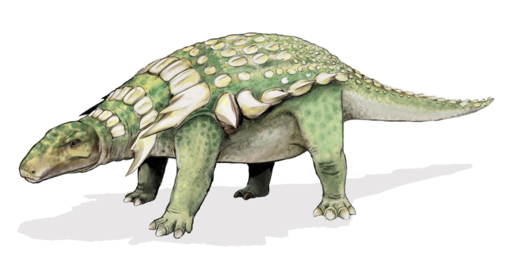The Armored Dinosaur
Edmontonia was a heavily armored dinosaur that roamed the earth during the Late Cretaceous period, around 76 to 70 million years ago.

| Meaning | Named after Edmonton, Alberta |
| Pronunciation | ed-MON-toh-nee-ah |
| When: | Late Cretaceous (about 76–70 million years ago) |
| Where: | North America (Canada, USA) |
| What: | Nodosaurid ankylosaur (armored herbivorous) |
| Weight: | Estimated around 3–4 metric tons |
| Length: | Approximately 6–7 meters (20–23 feet) |
| Diet: | Herbivorous (ate low-lying vegetation) |
| Discovered: | First described by Charles M. Sternberg in 1928 |
It was part of the nodosaur family, a group of dinosaurs known for their extensive body armor and lack of tail clubs, distinguishing them from their ankylosaur relatives.
Named after the Edmonton rock formation in Canada where its fossils were first discovered, Edmontonia was a formidable herbivore.
Growing up to 7 meters (23 feet) in length and weighing up to 3 tons, Edmontonia had a wide, low-slung body covered in bony plates (osteoderms) and spikes. These defensive features protected it from predators like the fearsome Tyrannosaurus rex.
Its most distinctive characteristics were the large shoulder spikes that jutted outwards, acting as an additional deterrent to any would-be attackers.
Edmontonia primarily fed on low-lying vegetation, using its beak-like mouth to crop plants.
Its robust body and strong limbs helped it navigate through the dense forests and open plains of what is now North America.
